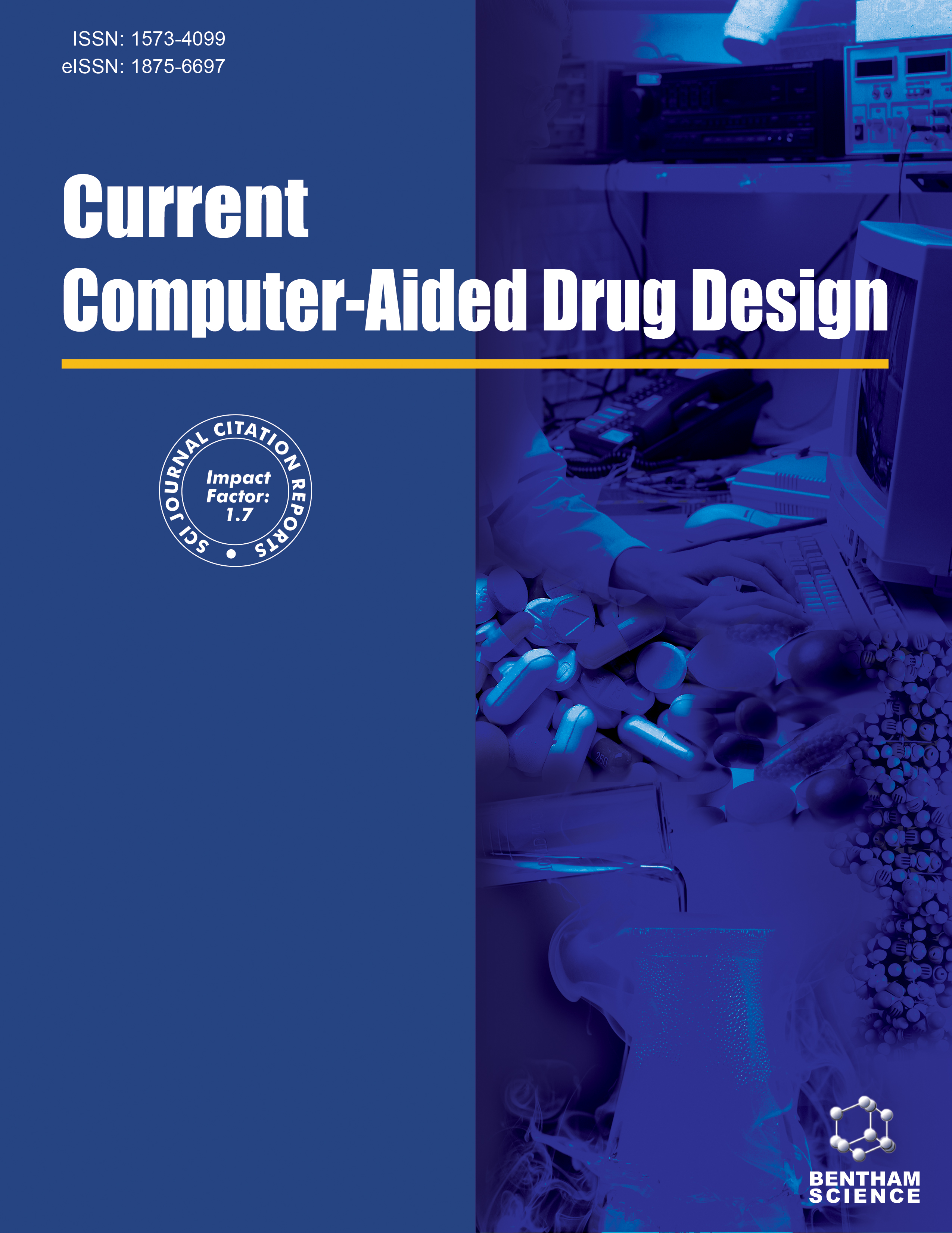- Home
- A-Z Publications
- Current Computer - Aided Drug Design
- Previous Issues
- Volume 18, Issue 2, 2022
Current Computer - Aided Drug Design - Volume 18, Issue 2, 2022
Volume 18, Issue 2, 2022
-
-
An Evaluation of Computational Learning-based Methods for the Segmentation of Nuclei in Cervical Cancer Cells from Microscopic Images
More LessBackground: The manual segmentation of cellular structures on Z-stack microscopic images is time-consuming and often inaccurate, highlighting the need to develop auto-segmentation tools to facilitate this process. Objective: This study aimed to compare the performance of three different machine learning architectures, including random forest (RF), AdaBoost, and multi-layer perceptron (MLP), for the autosegmentation of Read More
-
-
-
In silico and in vitro Estimation of Structure and Biological Affinity of 1,3- Oxazoles: Fragment-to-fragment Approach
More LessBackground: The fragment-to-fragment approach for the estimation of the biological affinity of the pharmacophores with biologically active molecules has been proposed. It is the next step in the elaboration of molecular docking and using the quantum-chemical methods for the complex modeling of pharmacophores with biomolecule fragments. Methods: The parameter φ 0 was used to estimate the contribution of π-elect Read More
-
-
-
Effects of Smokeless Tobacco Samples from Tabuk Saudi Arabia on Nitric Oxide Production: A Potential Risk for Cancer and Cardiovascular Diseases
More LessBackground: Smokeless tobacco (SLT) is traditionally used in Middle East countries. The several toxic constituents with potential carcinogenicity make it a serious human health risk. Literature regarding their effects on cardiac and cancer disease is lacking in Saudi Arabia. Objective: This study was conducted to investigate the adverse effect of 11 different samples of widely used SLT varieties from the Tabuk region - Saudi Read More
-
-
-
Design of Multitarget Natural Products Analogs with Potential Anti-Alzheimer’s Activity
More LessBackground: Alzheimer’s disease (AD) is a neurodegenerative condition and the most common type of dementia among the elderly. The enzymes acetylcholinesterase (AChE) and nitric oxide synthase (NOS) have a pivotal role in the pathophysiology of this disease. Objective: This study aimed to select medicinal plant-derived molecules with reported inhibition of AChE and design optimized molecules that could inhibit not only A Read More
-
-
-
Automated in silico EGFR Peptide Inhibitor Elongation using Self-evolving Peptide Algorithm
More LessAuthors: Ke H. Tan, Sek Peng Chin and Choon Han HehBackground: The vast diversity of peptide sequences may hinder the effectiveness of screening for potential peptide therapeutics as if searching for a needle in a haystack. This study aims to develop a new self-evolving peptide algorithm (SEPA), for easy virtual screening of small linear peptides (three to six amino acids) as potential therapeutic agents with the collaborative use of freely available software that can be run Read More
-
Volumes & issues
-
Volume 21 (2025)
-
Volume 20 (2024)
-
Volume 19 (2023)
-
Volume 18 (2022)
-
Volume 17 (2021)
-
Volume 16 (2020)
-
Volume 15 (2019)
-
Volume 14 (2018)
-
Volume 13 (2017)
-
Volume 12 (2016)
-
Volume 11 (2015)
-
Volume 10 (2014)
-
Volume 9 (2013)
-
Volume 8 (2012)
-
Volume 7 (2011)
-
Volume 6 (2010)
-
Volume 5 (2009)
-
Volume 4 (2008)
-
Volume 3 (2007)
-
Volume 2 (2006)
-
Volume 1 (2005)
Most Read This Month
Article
content/journals/cad
Journal
10
5
false
en


